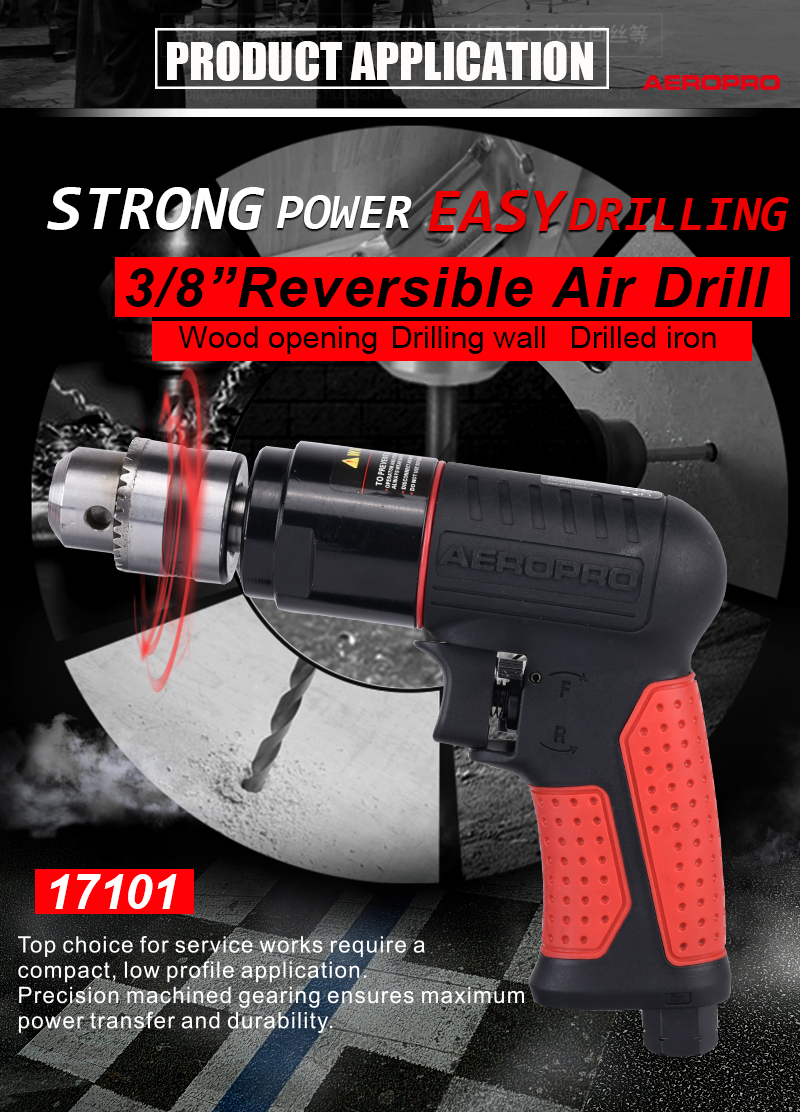
How to safety use an Air Drill?
Wear safe clothing and eye protection. Avoid baggy clothing or dangling jewelry that could catch in the drill as you lean over it. Wear safety goggles or glasses that cover the sides of your eyes, to protect them from flying debris.2. Wear ear protection if drilling regularly. A handheld electric drill produces about 90 decibels, which is just enough to cause hearing damage after prolonged exposure.
Most air drills are quiet enough that hearing protection is not necessary. •Impact drills (hammer drills) are the loudest handheld drills, producing over 100 dB. Hearing protection is recommended whenever using them.
Protect your lungs when necessary. If the project kicks up a lot of dust, wear breathing protection. A dust mask is only good for short-term comfort. Use a respirator if you drill regularly or for long periods of time, or if the material you are drilling is a known respiratory hazard. •Each respirator is rated for certain types of hazards. Make sure the one you use is suited to your project.
Choose the correct drill bit. Using a bit made from the wrong material can cause the bit or the material you're drilling to break. You can use a general-purpose bit on most wood; a masonry bit for stone, brick or concrete; an HSS (high speed steel) bit on most metals; and a carbide or diamond-tipped bit on very hard, brittle surfaces such as porcelain, glass, or glazed tiles.
There are many specialized bit designs, so consult the drill manual or bit manufacturer if you're not sure which bit to use. •When drilling a hole for a screw, there's an easy way to find the right size bit. Hold the screw up directly behind the bit. The bit should hide the shaft of the screw from view, but the screw threads should still be visible on both sides
Fit the drill bit firmly into the chuck. The chuck is the clamp in the "jaws" of the drill. This holds the drill bit in place as it spins. To replace a drill bit, make sure the drill is off (and unplugged if corded), then loosen the chuck by rotating it. Depending on the drill, you may be able to do this by hand, or you may need a chuck key located in a compartment in the top or handle of the drill.
Insert the drill bit into the chuck, then tighten again. Make sure the bit is straight and secure, and remove the key before you turn on the drill. •Each chuck has a maximum size. Most drills made for home use in the world have a chuck of size 1/4", 3/8", or 1/2". The shaft of the drill bit must be smaller than this size (but the tip can be larger). •Run the drill and watch the bit spin in the air. If it wobbles from side to side (or looks like a blurry cone), the bit is bent or not secured correctly. Discard bent bits, since they can easily break during drilling.
Clamp small pieces together. If you are drilling into a small, loose piece, clamp it down firmly before you drill. Do not hold the piece down with one hand while drilling, as the drill could slip and injure you.